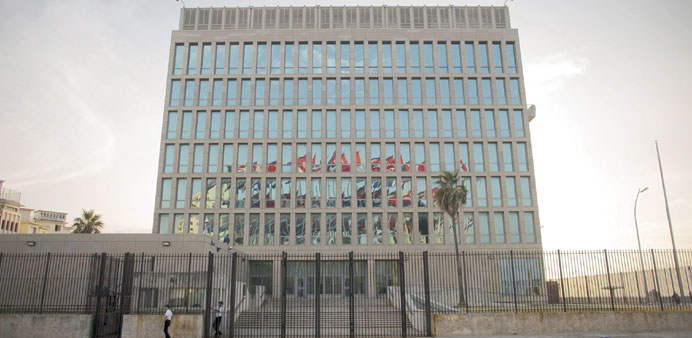By Lewis WDiuguid/The Kansas City Star/TNS
Our first glimpse of Cuba’s future occurred at the airport in Tampa, Florida. The checked bags and packages of Cubans returning to Havana included large flat-screen TVs, electronics, appliances and shrink-wrapped luggage loaded with consumer items that they couldn’t get in their country. One man wore a stack of several cowboy hats.
My partner, Bette, and I were among 19 educators, students and other professionals ages 20 to 83 on a “Cuba at a Crossroads” tour in July sponsored by the National Association for Multicultural Education. The trip followed the announcement last December by President Barack Obama and Cuban President Raul Castro announcing talks December 17 to normalise relations between two long-estranged countries.
We wanted to see this communist nation before it started to change. With the diplomatic thaw and embassies opening, change will be inevitable.
The history of the strained relations between the US and Cuba isn’t a mystery to Cubans. They know of the successful revolution that Fidel Castro led in 1959, the state takeover of property and the exodus of wealthy Cubans to the US.
The youngest members of our group, however, weren’t aware of the unusual history between the US and Cuba. It wasn’t taught in their schools.
Those of us who were older lived through the tensions, including the failed 1961 US-backed Bay of Pigs invasion, the many attempts to assassinate Fidel Castro and the 1962 missile crisis when the Soviet Union tried to put weapons in Cuba aimed at the US. Cold War tensions and the threat of nuclear annihilation had never been higher. Fortunately the Soviets blinked, and war was averted.
The Cubans, though, have suffered 54 years of isolation caused by a US trade embargo that President John F Kennedy initiated after Cuba’s takeover of US assets. Life for Cubans got harder after the Soviet Union collapsed in 1991, severing Cuba’s economic lifeline. Conditions worsened after Congress in 1996 passed the Helms-Burton law, imposing sanctions against foreign countries and corporations that did business with Cuba.
Cubans told us the “special period” was worse than the Great Depression in the US. Cuba was unable to export goods, including coffee, sugar and mining products of nickel and cobalt.
Rita M Pereina, who was our guide during our eight days in her homeland, said Cuba’s 11mn people went without food and good nutrition. Transportation suffered, and electricity was scarce.
“We didn’t have blackouts, we had lights on only seven to eight hours at a time, maybe,” said Pereina. “Cuba had to learn to survive.”
It did by becoming more open to people visiting Cuba. People marvel at the 1940s to 1960s American autos, which Cuban ingenuity keeps running. Housing and other structures also are old but deteriorating because of a devastated economy.
Yet in the streets of Havana and the Cuban countryside, we saw young people hungry for Western technology. Bigger hotels than the Hotel Paseo Habana where we stayed offered Wi-Fi, attracting young Cubans with smartphones, tablets and laptops to the lobbies.
A Wi-Fi hotspot in a Havana park was filled with young Cubans glued to their new devices. The Cuban Parliament during our stay even started giving updates on Twitter and Facebook.
In a discussion we had with members of the Community Project Espiral, a group that educates youths on environmental issues and sustainable development, Cubans said they wanted better relations with the US and wanted America out of Guantanamo. They hoped for more Wi-Fi, Facebook and other social media access. But no one expected American fast food like McDonald’s to replace Cuban cuisine or Starbucks to outdo Cuban coffee.
We laughed and could clearly see that their optimism and social media will help unite our nations. That was our hope, too.
♦ Readers may write to Lewis W Diuguid, a member of The Kansas City Star’s Editorial Board, by e-mail at [email protected]

Cubans flags are reflected at the US embassy in Havana.


